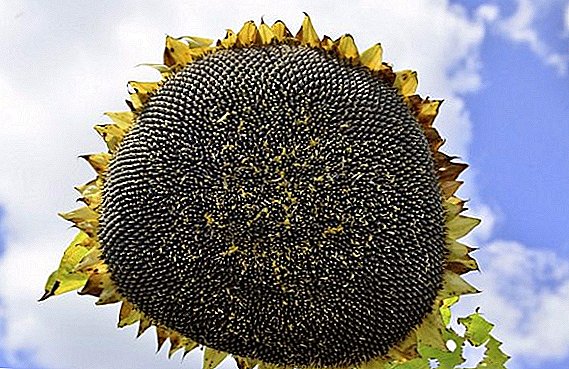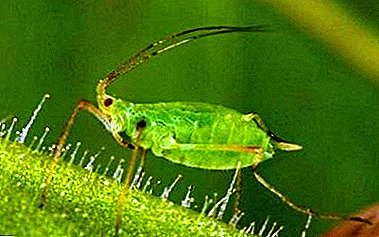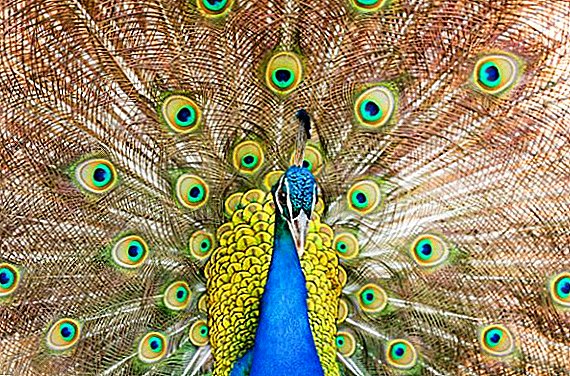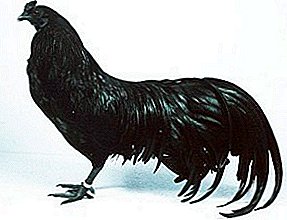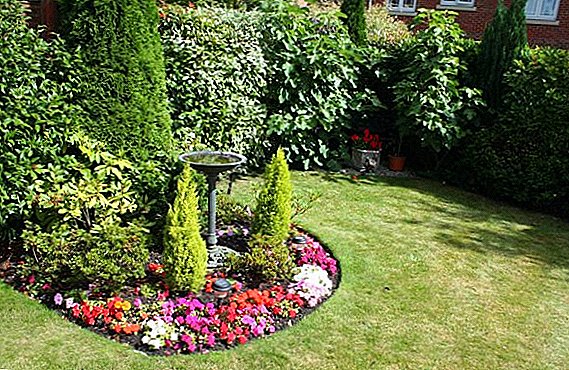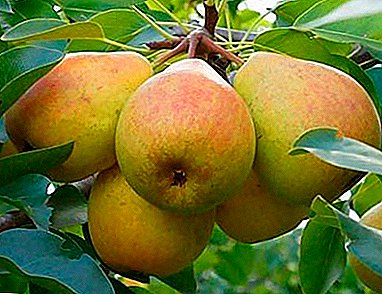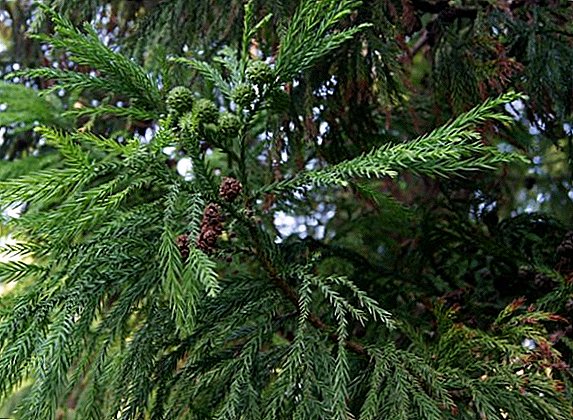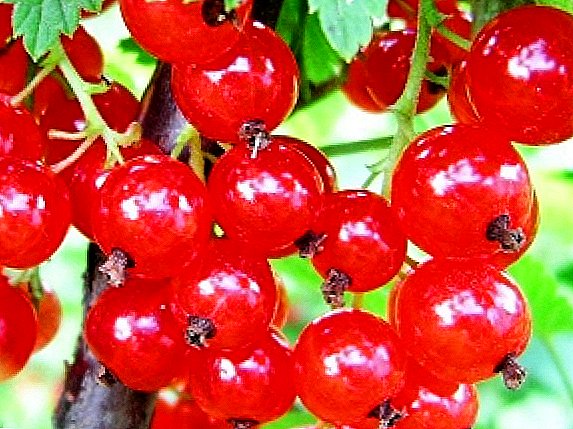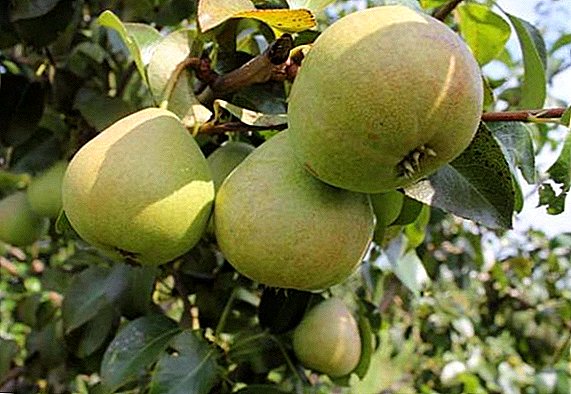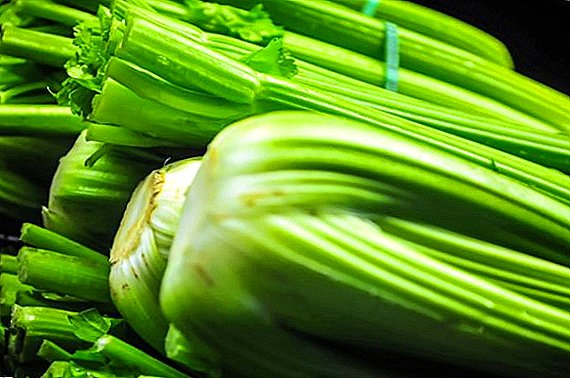 Many gardeners and gardeners believe that umbrella and green crops do not require special care - it is necessary to sow the seeds and the harvest will turn out by itself. However, both dill and carrots, and celery affects diseases and pests. Having identified the yellowed leaves, do not rush to draw conclusions, it is better to consider the symptoms and determine the cause. Timely recognition will get rid of the disease in the embryo and prevent its spread.
Many gardeners and gardeners believe that umbrella and green crops do not require special care - it is necessary to sow the seeds and the harvest will turn out by itself. However, both dill and carrots, and celery affects diseases and pests. Having identified the yellowed leaves, do not rush to draw conclusions, it is better to consider the symptoms and determine the cause. Timely recognition will get rid of the disease in the embryo and prevent its spread.
How can celery get sick?
 Celery (Latin name Apium) - plant of the umbrella family. The most common crop is celery fragrant. This root crop grows in Hindustan, in countries of Asia, Africa, America, choosing a place with enough moisture to live. At home, celery (Mediterranean) and today you can find wild forms of this plant.
Celery (Latin name Apium) - plant of the umbrella family. The most common crop is celery fragrant. This root crop grows in Hindustan, in countries of Asia, Africa, America, choosing a place with enough moisture to live. At home, celery (Mediterranean) and today you can find wild forms of this plant.
Did you know? Celery has been used for a long time: in Greece it was specially grown and ate only leaf stalks. And in Egypt and the Roman Empire, celery was used to make wreaths on graves, and the departed were commemorated with food prepared on its basis.
Celery can be affected by these diseases:
- Cercospora Most often infect plants in greenhouses and greenhouses. All aboveground organs are affected. Churcosporosis is born on the seedlings, and then goes to adult plants. Signs: irregular or rounded spots appear on the sheet, which eventually become purple.
- Septoria. It affects the stalks, stems, leaves. Signs: round, chlorotic or yellow-chlorotic spots appear on the celery, which eventually brighten in the center, and a dark border appears. The consequences - the leaves curl and dry, the stalks thin out and become fragile.
- Mealy dew. Can affect celery in both open and protected ground. It affects all aboveground parts of the plant, most of all the leaves. Manifested by white bloom, which later becomes mealy with black patches. With severe infection, powdery mildew affects both sides of the leaf, stems and petioles, celery rots.
- Fomoz. Celery is already affected by storage. This mushroom is transmitted along with the seeds. It affects both aboveground and underground parts of the plant. The first manifestation of fomoz is that the top point of the seedling is affected, and the fungus subsequently moves to the stem. The plant slows growth, the leaves turn yellow, acquiring a bluish or brown color at the base, the petioles break.
How to cure white rot celery
 The source of Sclerotinia sclerotiorum (the so-called white rot) is contaminated soil. White rot appears on the acidic, nitrogen-rich earth in cool, wet weather or during storage.
The source of Sclerotinia sclerotiorum (the so-called white rot) is contaminated soil. White rot appears on the acidic, nitrogen-rich earth in cool, wet weather or during storage.
Distinctive feature - a white patina (mycelium) appears on the celery, on which black sclerotia of the fungus subsequently occurs. Over time, the fabric becomes softer, turns brown, and the root crop rots.
Treatment and prevention:
- Sour soil needs to be lime;
- Before planting seedlings, the ground must be disinfected;
- From plant beds before planting, it is necessary to remove all plant residues and weeds;
- Good ventilation of celery storage will reduce the risk of spreading sclerotinia.
Important! Before storing the powder powdered container with chalk. Only healthy tubers can be left for storage. Inspect the roots need every 10 days. The optimal storage condition is 0– + 2 ° С with air humidity of 90–95%.
What if celery gets sick, rust on the leaves
Celery leaves may appear rusty in early summer. The disease manifests itself with red-brown pads on the underside of leaves and petioles, which eventually develop into light brown spots, and by the autumn they form a continuous dark brown sporulation.
 Affected leaves rust turn yellow and dry, losing taste, and petioles lose their presentation and useful properties (as is known in traditional medicine, celery is used in diseases of the gastrointestinal tract and urolithiasis).
Affected leaves rust turn yellow and dry, losing taste, and petioles lose their presentation and useful properties (as is known in traditional medicine, celery is used in diseases of the gastrointestinal tract and urolithiasis).
Treatment and prevention:
- Sow (planting) celery at the optimum time;
- In order to prevent spray plants with biological means of protection (Fitosporin, Baktofit).
Why celery leaves have white spots, ways to treat a plant for septoria
Late burn (septorioz) affects celery at the end of summer. The disease manifests itself with many small yellow spots on the leaves and brown-brown, oblong, as if indented spots on the petioles. The affected leaves twist and dry, the stalks break.
The causative agent of septoria is preserved on plant residues in the soil and seeds for up to three years. It becomes active in cold and rainy weather.
Treatment and Prevention:
Before planting, disinfect the seeds (temperature treatment at 48 ° C for 30 minutes); Observe crop rotation; Do not leave plant residues and weeds on the beds - it is better to destroy them; In case of severe infection, spray celery with a solution of Fundazole or Topsina-M (no later than 20 days before harvesting).
What to do if celery struck a cucumber mosaic
 This type of disease is viral in nature. Depending on what type of cucumber mosaic struck the root crop, large rings or small ringlets appear at the top of the plant, the plant slows down its growth.
This type of disease is viral in nature. Depending on what type of cucumber mosaic struck the root crop, large rings or small ringlets appear at the top of the plant, the plant slows down its growth.
Immediately remove infected plants from the garden bed. Since the viral forms of the disease are incurable, for the purpose of prevention it is necessary to fight against the carriers of viruses - aphids and ticks.
How to cure leaflets
Cercosporosis (early burn) can manifest itself in cool, wet weather with sudden changes in temperature.
On the leaves of celery appear multiple round spots (about 5 mm in diameter) with a light middle and brown edges. On the petioles an early burn manifests itself of the same nature as oblong-shaped spots. At increase of humidity of a spot become covered by a raid with a violet shade. In the process of developing the disease leaves and petioles dry up.
To combat cercosporosis, they use the same methods as in septoria.
Rust on the leaves - what to do in such a situation
Rust fungi are easily detected on celery through bundles of yellow, brown, red and black spores. The seeds of the fungus are formed under the skin of the leaves, and when it breaks, the infection spreads throughout the growing season.
In order to protect celery from this disease, for planting it is necessary to use only healthy materials, as well as completely destroy plants that have been found to be rust.
How to protect celery from scab
 Most often, this disease affects celery in cold and wet weather. Manifested by brown spots on the roots of the plant. In the course of the development of the disease, the peel cracks and flakes.
Most often, this disease affects celery in cold and wet weather. Manifested by brown spots on the roots of the plant. In the course of the development of the disease, the peel cracks and flakes.
To prevent scab infection, you should not re-plant celery in one area - take a break of several years.
In order to get a good harvest of celery, it is necessary to carry out disease prevention.
Major celery pests
Vegetables cause considerable damage to various pests, sometimes literally physically uprooting the future harvest.
How to deal with celery fly
Borschevichnaya boravnitsa (celery fly) - an insect of red-brown color 4-6 mm long. Lays under the skin of the leaves whitish oval eggs, of which there are legless light green larvae.
It is possible to detect pest eggs by looking at the leaves to the light - brownish specks are visible. The hatched larvae make passages in the form of brown spots in the leaf pulp. With a strong infection, the plant dries out.
Ways of struggle:
- Strict adherence to crop rotation (sow celery in one place with a break of 3-4 years);
- Complete destruction of weeds and plant residues in the area;
- Thermal and chemical disinfection of seeds before sowing.
Did you know? Late celery crops are more strongly affected by the celery fly, and the onion neighborhood will help scare them away.
What is dangerous carrot listobloshka
 Externally, the leafblock is a jumping greenish insect with a body length of 1.7-1 mm. Flea larvae are flat, green-yellow. They overwinter in coniferous trees and in spring move to celery.
Externally, the leafblock is a jumping greenish insect with a body length of 1.7-1 mm. Flea larvae are flat, green-yellow. They overwinter in coniferous trees and in spring move to celery.
Adult insects and larvae suck sap from the leaves, as a result of which the leaves curl, the petioles shorten, the plant is inhibited and the yield is significantly reduced. The peak of the leaflet activity is June-July. Root crops growing in areas near pine forests suffer the most.
Ways to fight with carrot fly
This insect hibernates in the ground, wakes up in spring and lays on the plants white eggs on the first leaves. The larvae which appeared later damage celery stalks.
Signs of defeat: foliage becomes red, wilts in the sun and turns yellow, gnawed out on the roots.
To combat the carrot fly, it is necessary to timely weed, feed and loosen the soil. For prophylaxis, at the beginning of June and the beginning of August, at intervals of 7 days, sprinkle a mixture of sand and tobacco dust between the beds. Sand can be replaced with dry mustard.
How to deal with bean aphids on celery
 Bean aphid (Aphis fabae) is the largest representative of this genus. It develops very quickly - every generation in 14 days.
Bean aphid (Aphis fabae) is the largest representative of this genus. It develops very quickly - every generation in 14 days.
At the first signs of the appearance of aphids on celery, the plant is sprayed with infusions and decoctions of yarrow, dandelion, potato tops, and tomatoes. You can use a water extract of citrus peels (1 part peels per 10 parts of water), which can withstand 3-5 days.
For the prevention of weeds and plant debris you need to timely remove from the garden and regularly carry out deep digging of the site.
Important! The breeding of bean aphids will interfere with the neighborhood of thyme and nasturtium.
The battle for the harvest involves daily work, including various activities. Hopefully, the information provided in this article will help to protect the stalked celery from diseases and pests.


